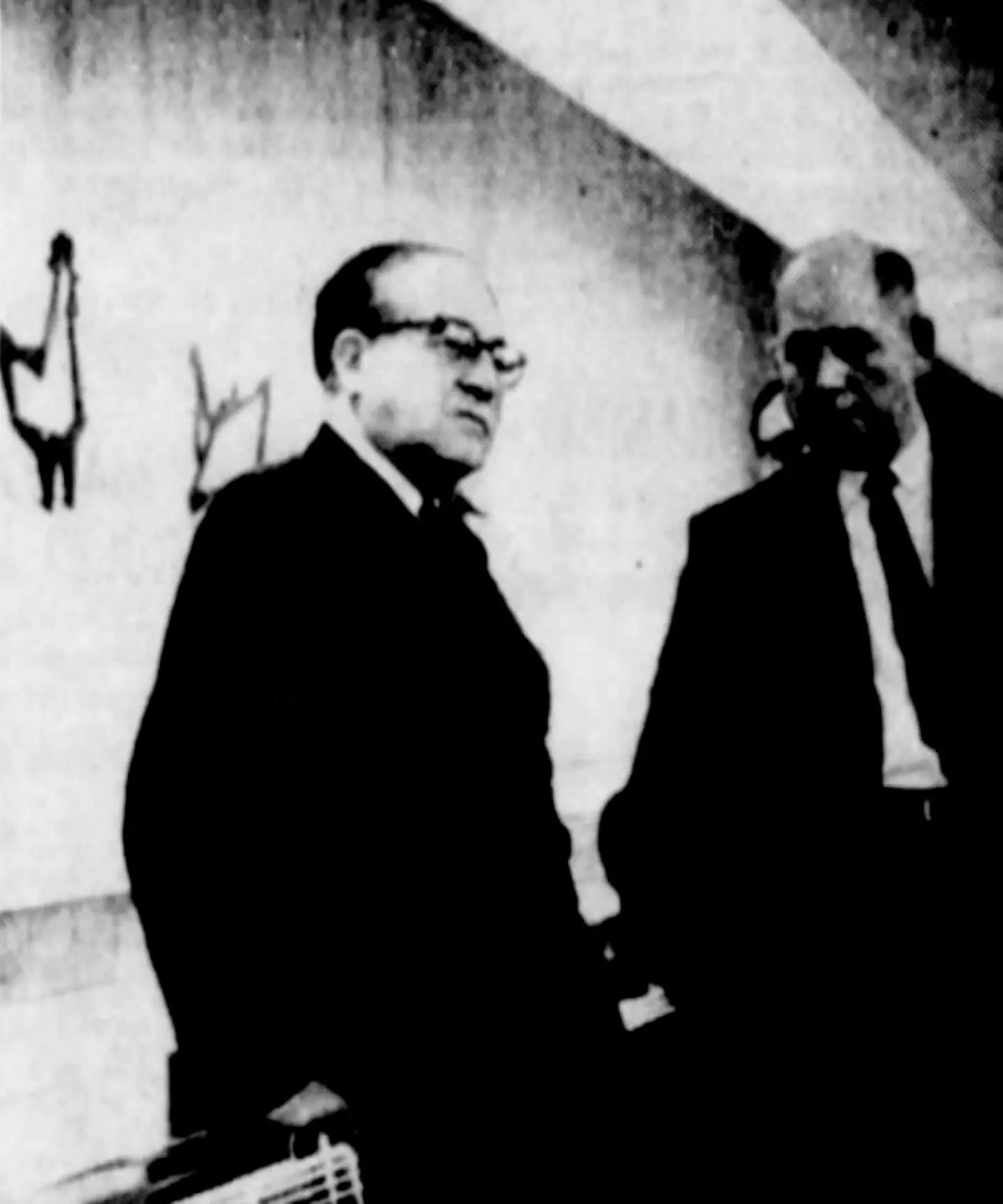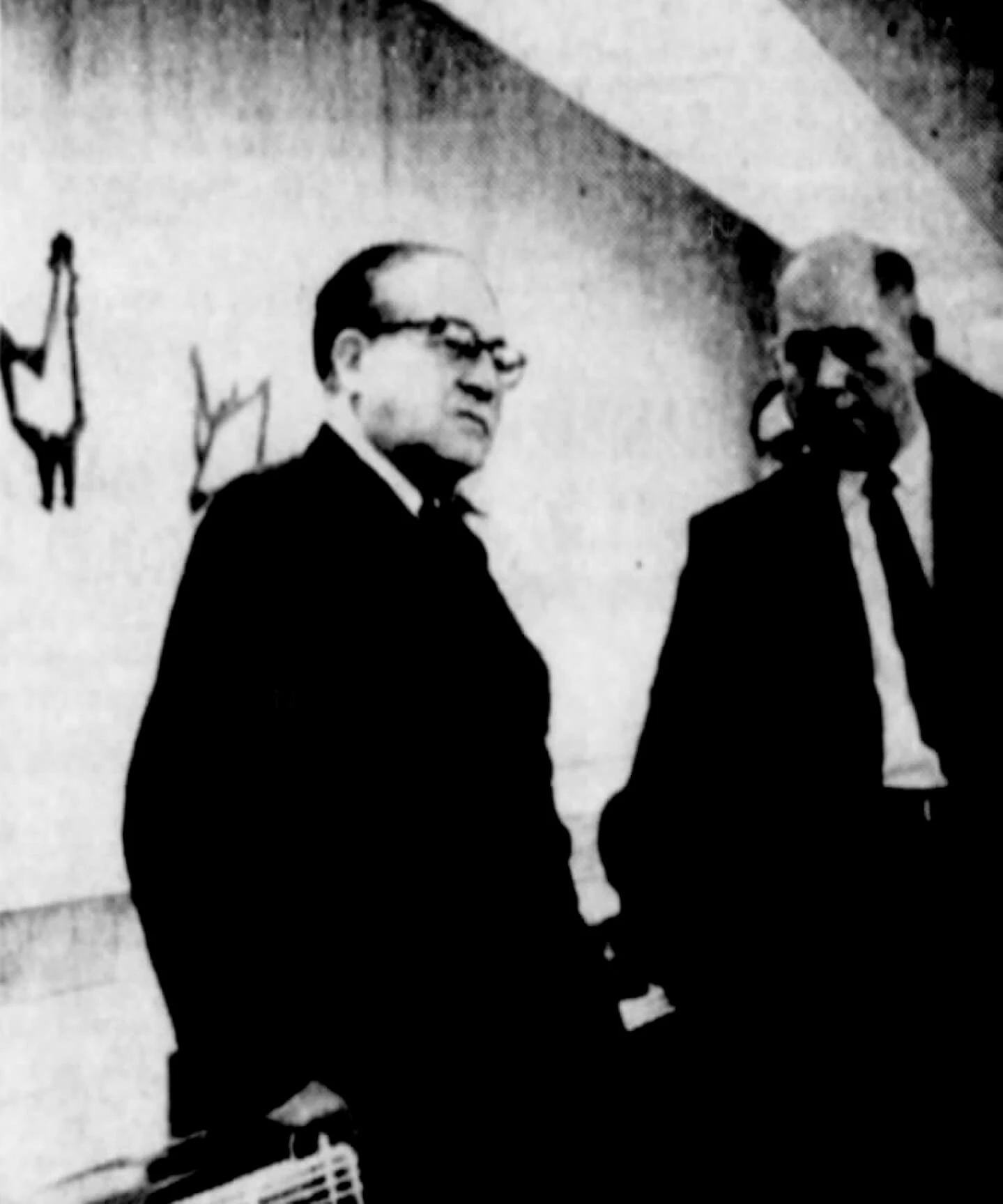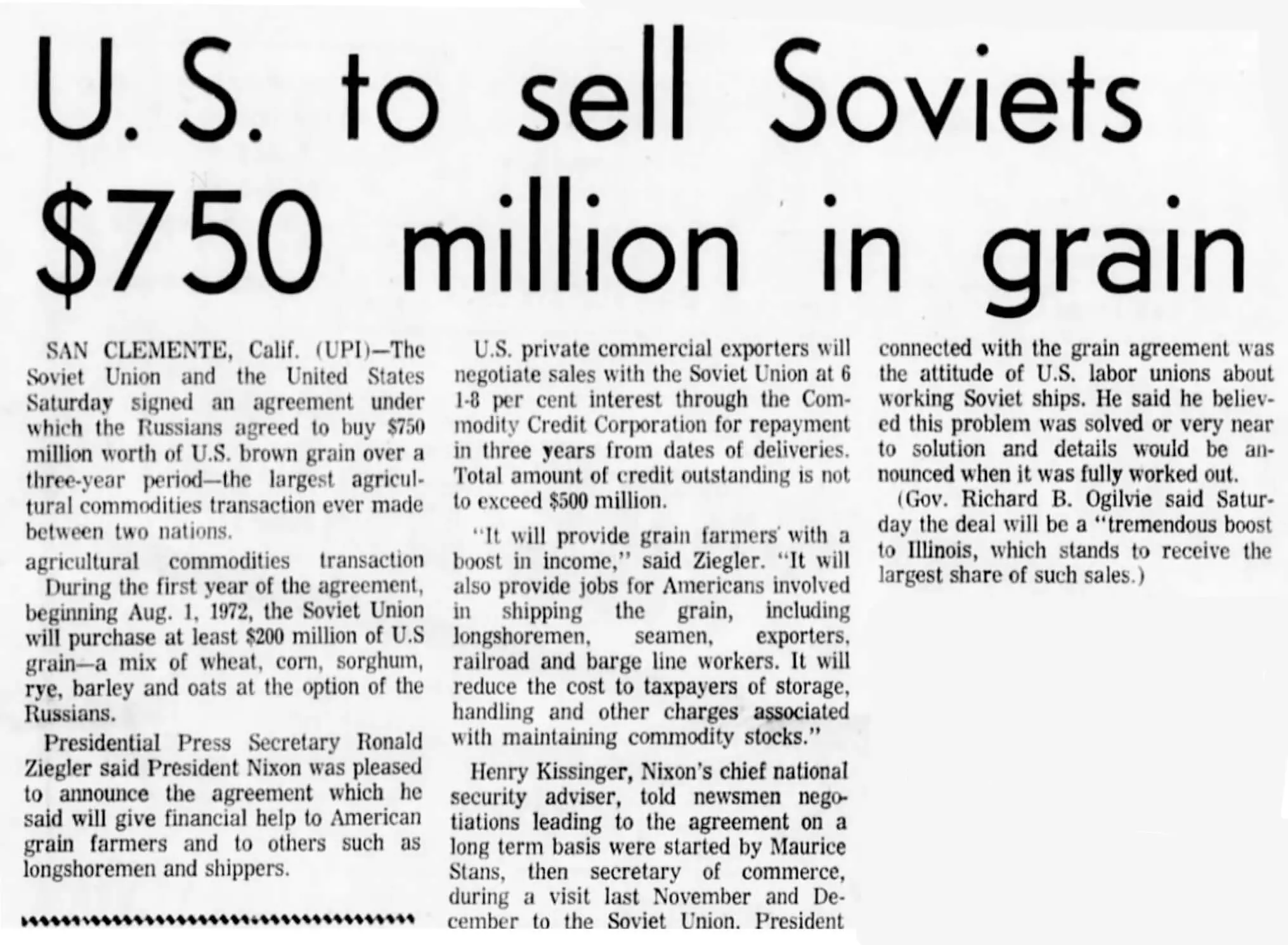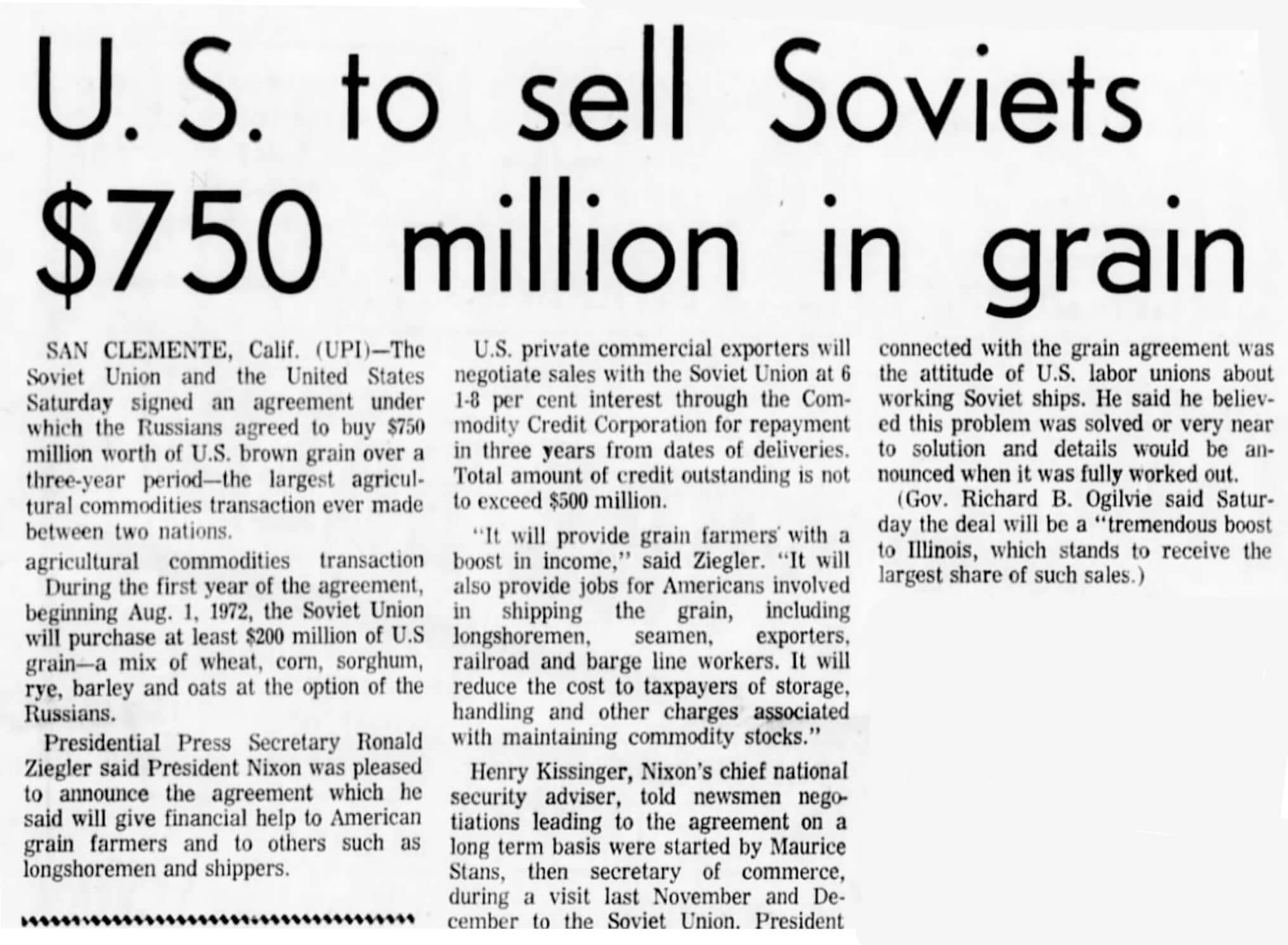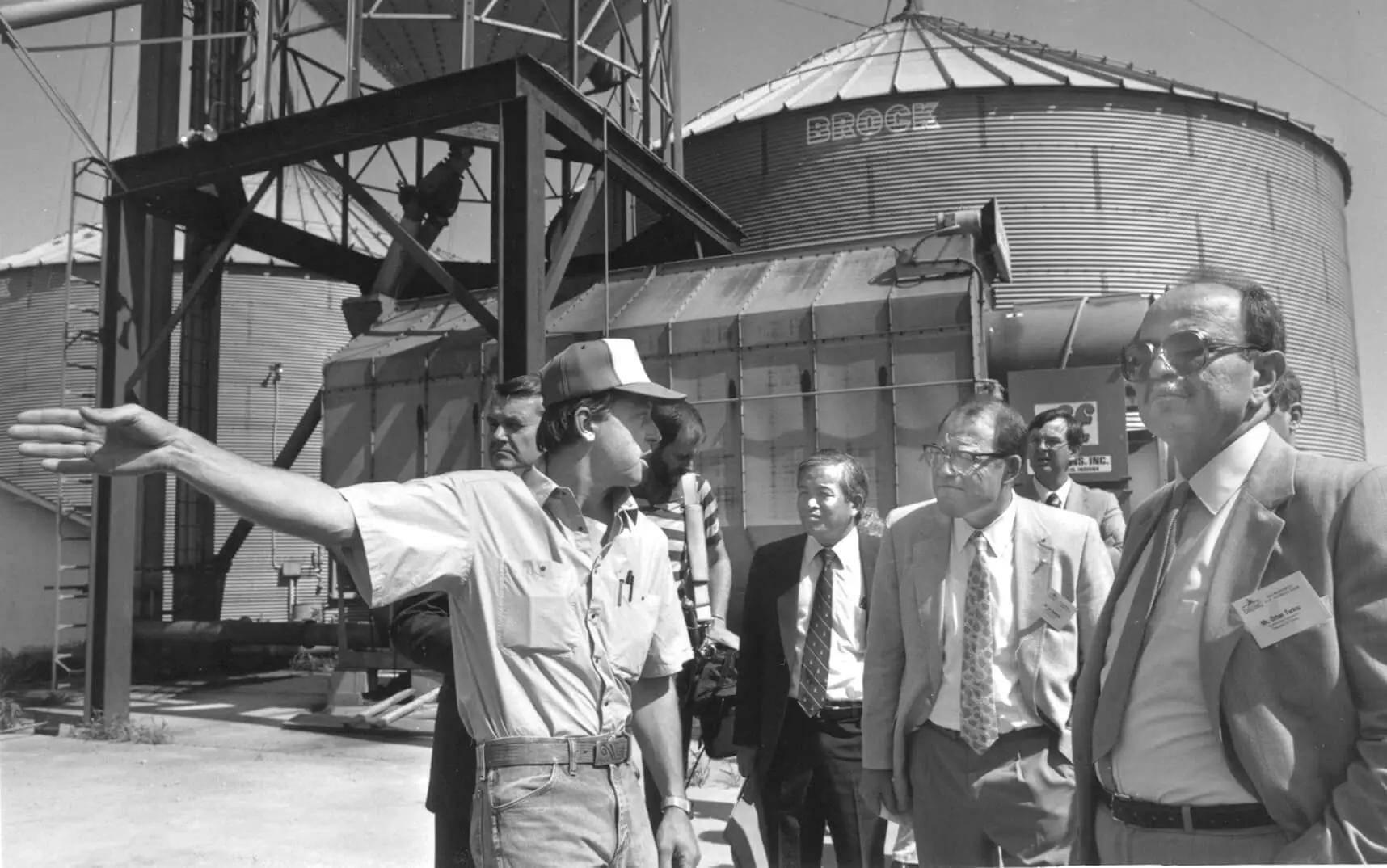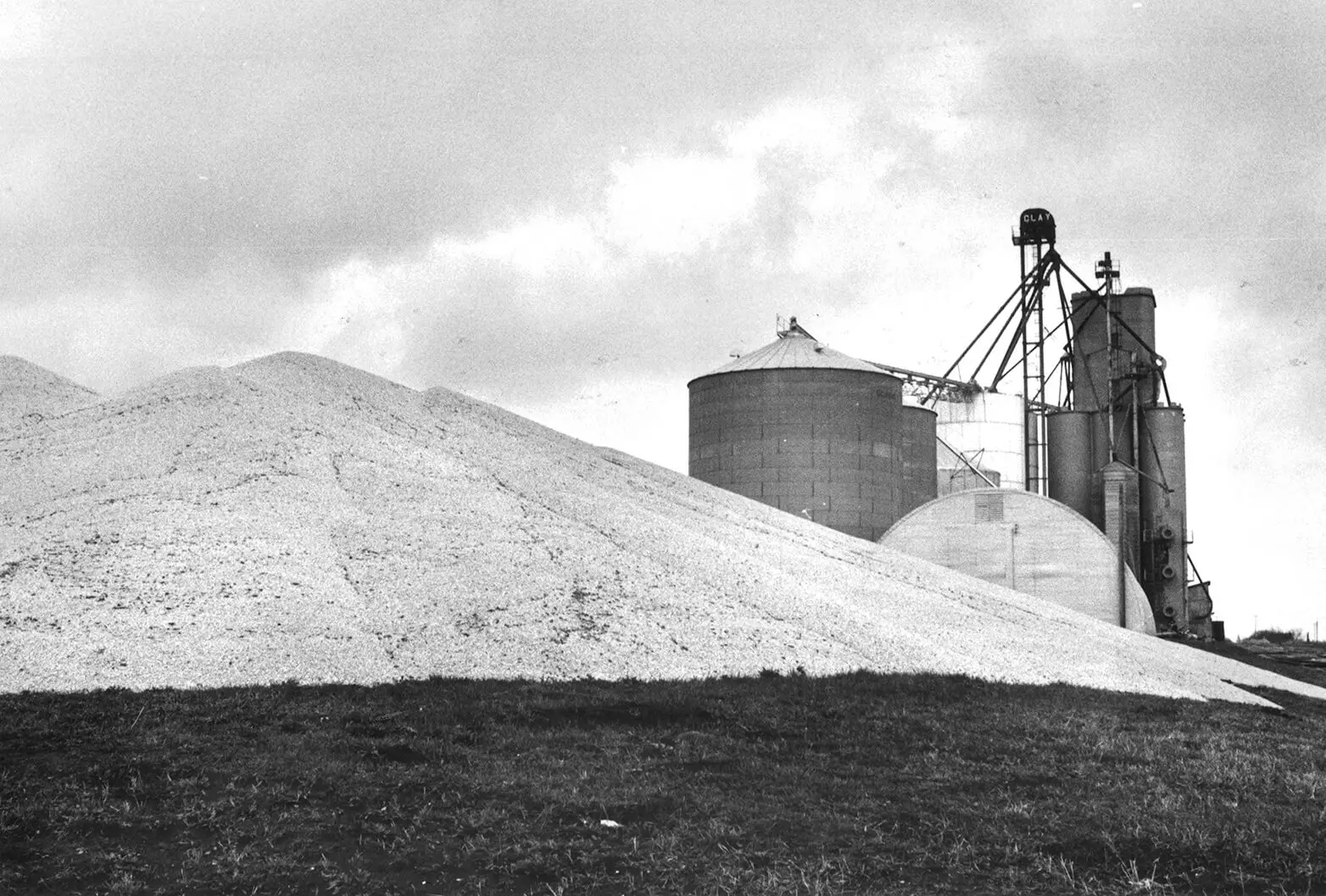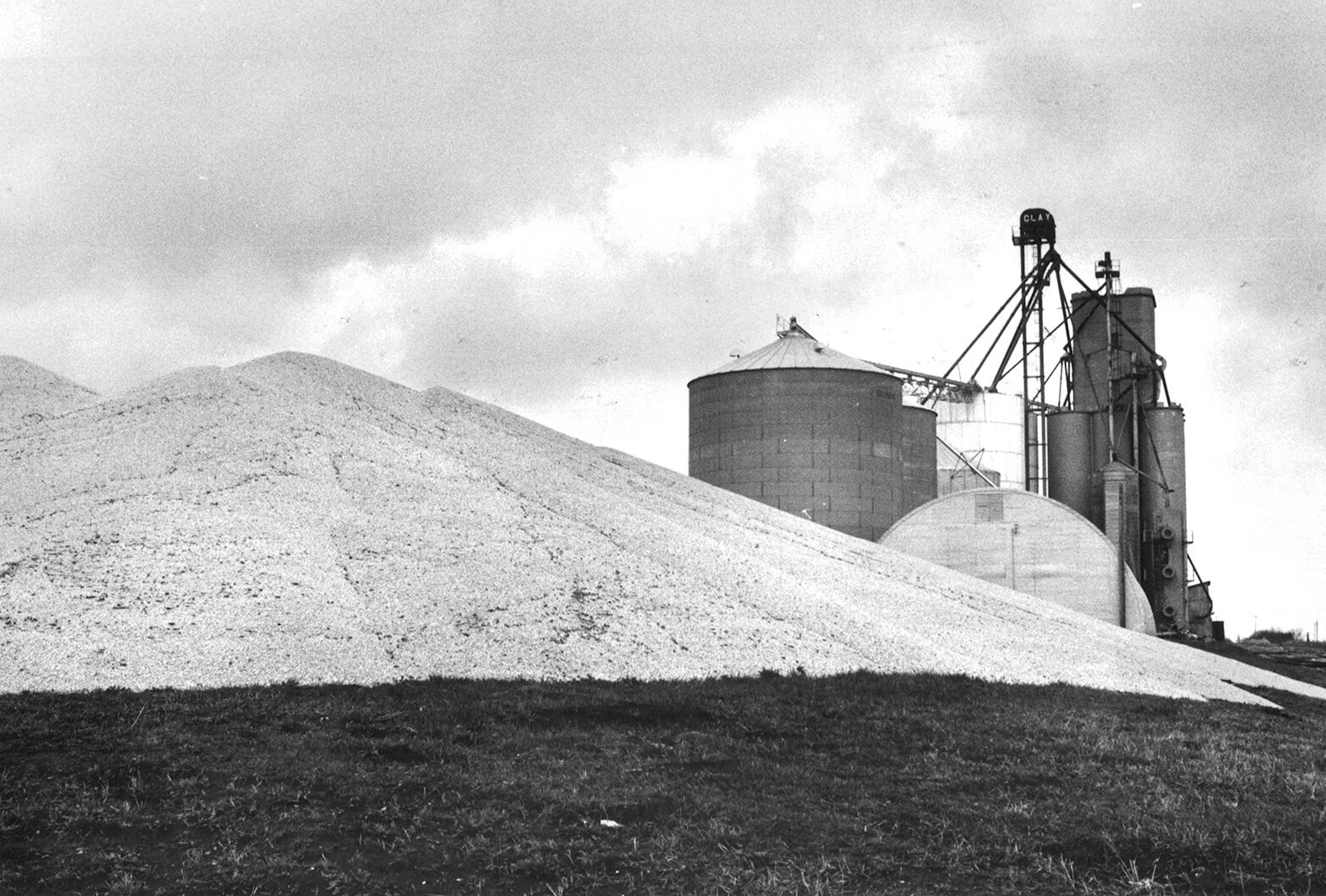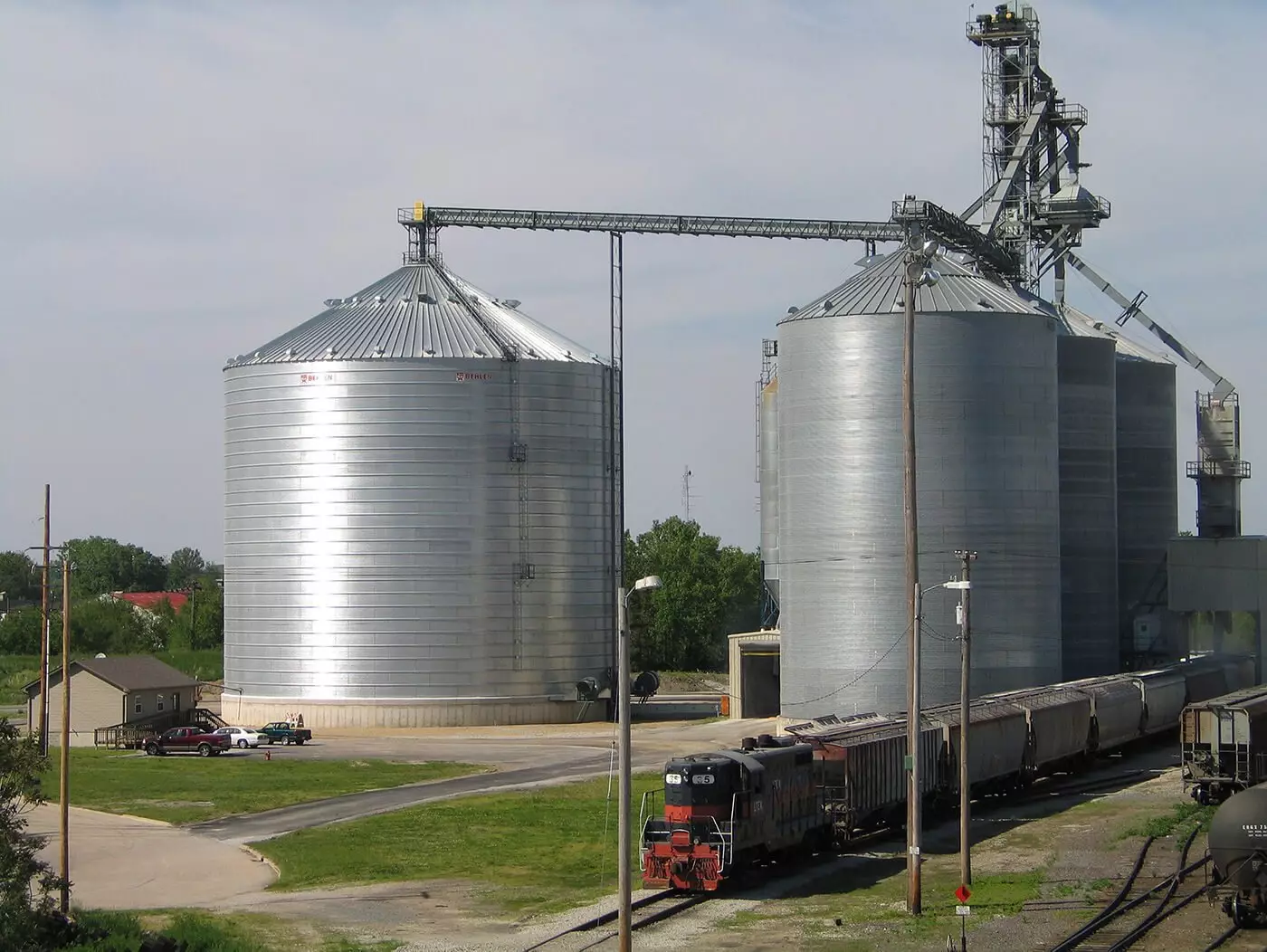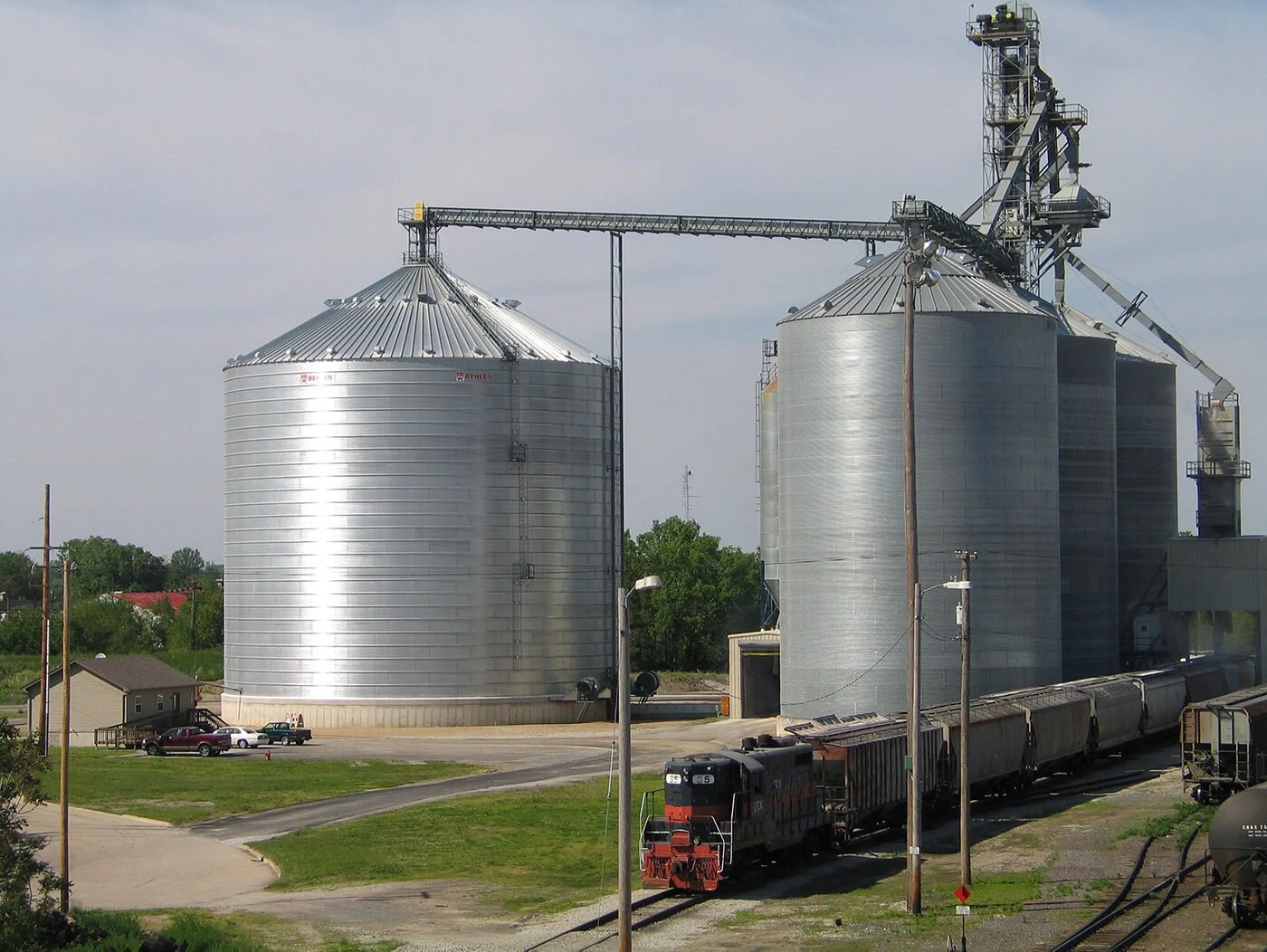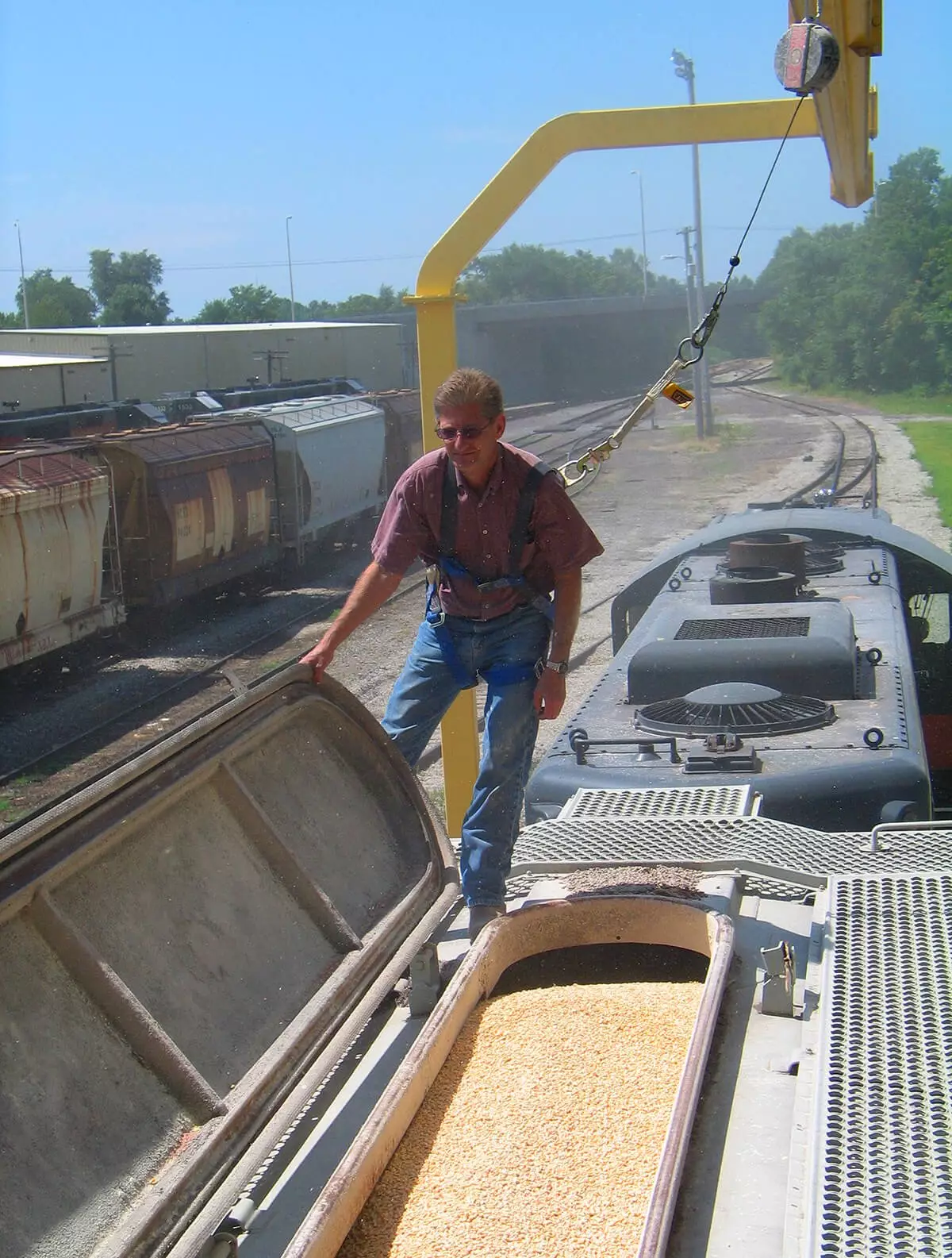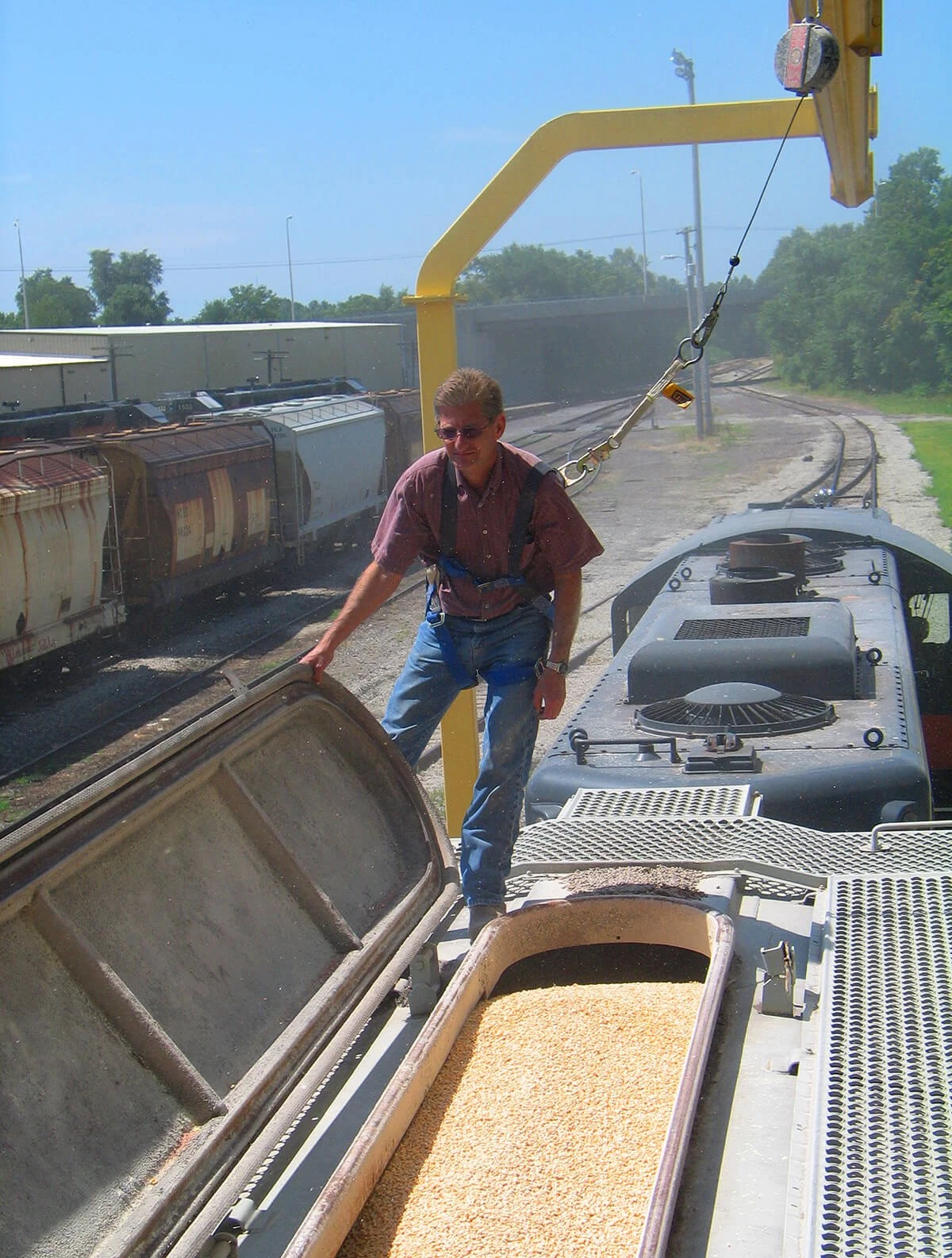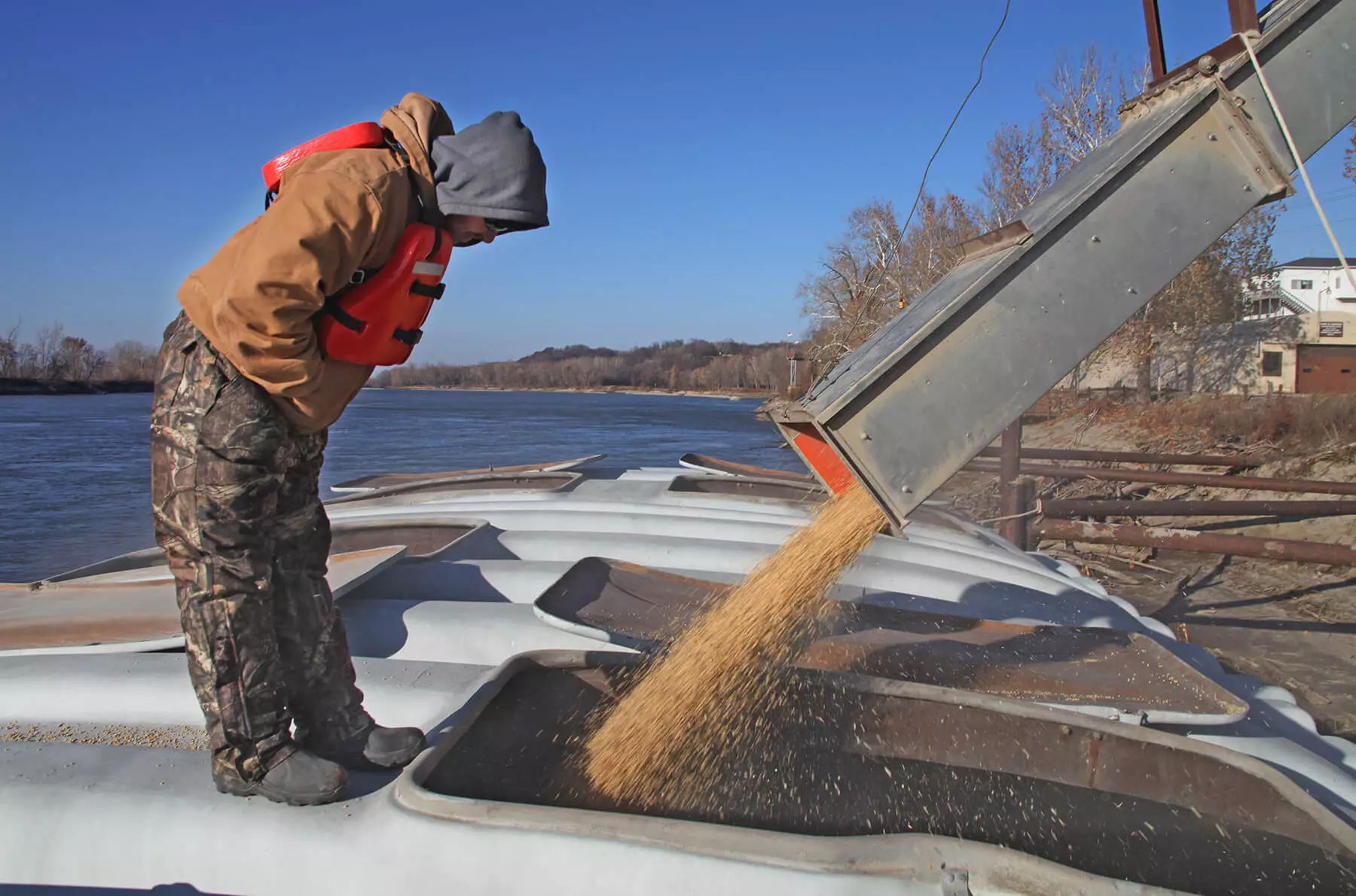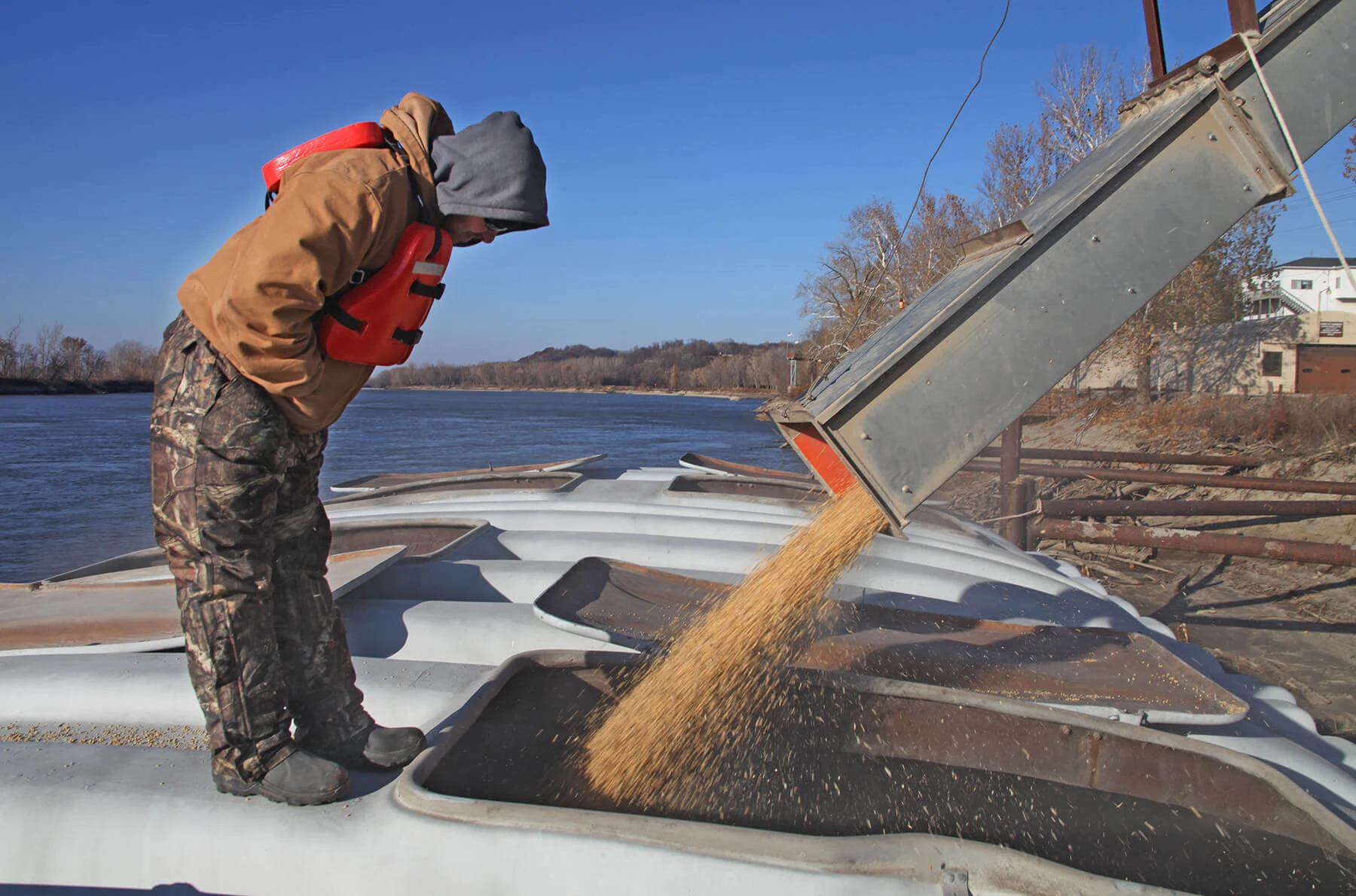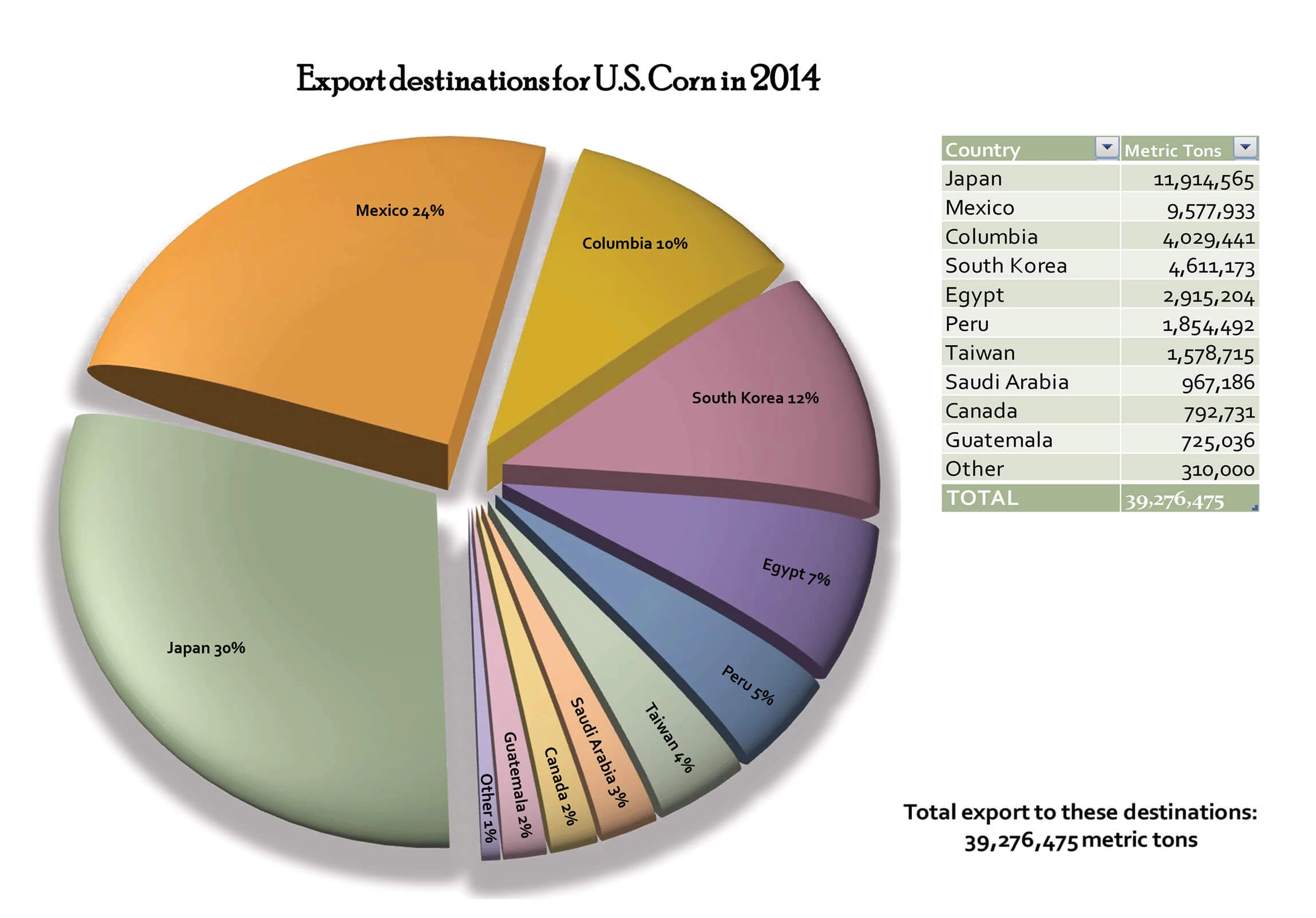Getting Crops and Livestock to Market – Marketing Our Crops
Finding New Markets for Grain
When World War II ended, so too did European need for U.S. grain. But with surplus to sell, representatives traveled to Europe in the hopes of finding markets for Illinois grain.
Illinois Agricultural Association (IAA) leader Dwight Davis of Bloomington met with a group in Italy. The manager of an Italian supermarket told him, “U.S. trade is the greatest protection we have in Europe against Communism.”
World grain markets became more open to U.S. imports in the 1970s.
Gaining Customer Loyalty
In the 1980s McLean County farmers did their part to ensure that international buyers were familiar with U.S. grain operations and quality to gain customer loyalty.
In 1986 representatives from the Soviet Union, Turkey, Mexico, Germany, Spain, Great Britain, Korea, the Netherlands, and Hungary visited the Mecherle farm to gain a better understanding of Illinois marketing and production processes.
“We know how to produce corn, but we need to find better ways of marketing it. Greater demand for U.S. ag product needs to be created abroad.”
— Mike Walden, Shirley farmer
Bloomington Pantagraph, September, 1982
Market Fluctuations
The number of corn and soybean acres planted, the density at which they were planted, as well as their yields, all increased as the last half of the 20th century passed. Market fluctuations of as little as a penny had a dramatic impact on McLean County profits.
In 1997, a year in which 47,087,376 bushels of corn were produced in McLean County, each penny gained in price per bushel meant a rise in McLean County corn income of $470,873. In 2015 McLean County farmers produced 63,148,000 bushels of corn.
How much would McLean County’s corn income increase if the price went up by a penny, 50 cents, or a dollar?
Grain Storage
During the 1990s McLean County’s corn crop typically left the field to be taken to on-farm storage, or to the local grain elevator.
From the local elevator some grain was transported by rail to Illinois processors, like Archer Daniels Midland (ADM) in Decatur, or to livestock growing regions elsewhere in the US.
Grain was also trucked to Pekin or Peoria where it was loaded on barges, then shipped down the Mississippi River to the Gulf of Mexico, then on to global markets.
Grains Sold Worldwide
By the 1990s the U.S. Department of Agriculture (USDA) handled all U.S. foreign grain markets and McLean County’s corn and soybeans were sold worldwide.
 Making a Home
Making a Home
 A Community in Conflict
A Community in Conflict
 Working for a Living
Working for a Living
 Farming in the Great Corn Belt
Farming in the Great Corn Belt
 Abraham Lincoln in McLean County
Abraham Lincoln in McLean County
